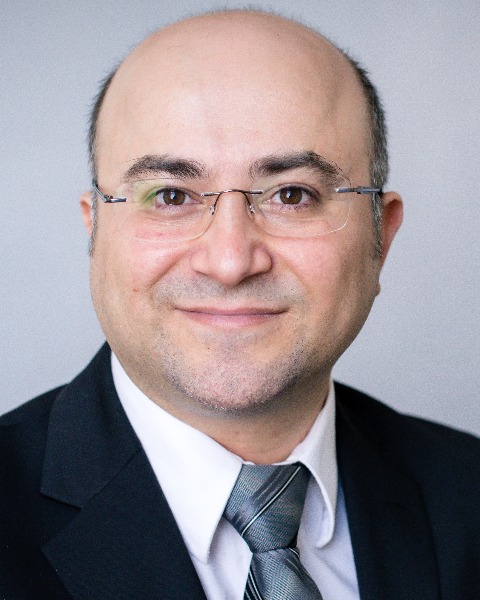Back
Nonvascular Interventions
Session: Educational Exhibit Presentations - Station 8: Neurointerventional Radiology and Nonvascular Interventions
Sharp Recanalization and Radiofrequency Wires for Biliary Occlusion and Neo-anastomosis Creation: How-to and Brief Review of Reported Outcomes
Monday, March 6, 2023
5:35 PM – 5:40 PM
Location: Phoenix Convention Center, North Ballroom 120ABC, Poster Hall


Husameddin El Khudari, MD (he/him/his)
Associate Professor
UAB
Junjian Huang, MD
Assistant Professor
Emory University School of Medicine- AG
Andrew Gunn, MD
Vice Chair, Interventional Affairs
University of Alabama At Birmingham
Abstract Presenter(s)
Author/Co-author(s)
Disclosure(s):
Eric Bready, MD: No financial relationships to disclose
Husameddin El Khudari, MD: No financial relationships to disclose
Andrew Gunn, MD: Boston Scientific: Consultant (Ongoing), Speaking and Teaching (Ongoing); Penumbra: Research Grant Recipient (Ongoing); Varian: Consultant (Ongoing), Research Grant Recipient (Ongoing), Speaking and Teaching (Ongoing)
Learning Objectives: Illustrate normal bile duct anatomy and post-surgical bile duct anatomy. Highlight biliary injury classification systems. Review patient presentation and imaging diagnosis of bile duct injury. Illustrate tools and techniques used for biliary access in preparation for biliary neo-anastomosis creation, including radiofrequency wires in addition to sharp recanalization. Discuss post-neo-anastomosis management using either internal/external biliary drain or internal metallic biliary stent.
Background: Bile duct injury is an important consideration for patients undergoing invasive liver interventions, such as liver transplantation or hepatic resection. Partial hepatectomy, especially, can rarely result in biliary occlusion where a portion of the biliary tree can no longer drain into the enteric system. Interventional radiologists play a key role in the management of this complex biliary complication, including short-term biliary drain placement, but also creation of biliary neo-anastomoses as a long-term, durable solution.
Clinical Findings/Procedure Details: Using simple instruments, fluoroscopy, and sometimes collaboration with other specialties, Interventional Radiologists can safely create new connections from occluded bile ducts to allow enteric drainage of bile, thereby helping patients avoid additional invasive surgery. The process of neo-anastomosis creation begins with biliary access, with placement of one or more external biliary drains. After decompression of the biliary tree, recanalization attempts can begin with either simple long 21-gauge needles, or radiofrequency wires. Based off of pre-procedural imaging, needles or wires can be directed towards the region of the enteric system and, after advancement, contrast injected to confirm position. Additionally, a rendevous approach can be taken, where a balloon in the enteric system is used as a target for puncture.
Conclusion and/or Teaching Points: Biliary duct injuries, such as total biliary occlusion, are a rare complication of hepatic surgical procedures. Interventional Radiologists have a unique skillset to temporize and treat bile duct occlusion, including the creation of biliary neo-anastomoses.
Background: Bile duct injury is an important consideration for patients undergoing invasive liver interventions, such as liver transplantation or hepatic resection. Partial hepatectomy, especially, can rarely result in biliary occlusion where a portion of the biliary tree can no longer drain into the enteric system. Interventional radiologists play a key role in the management of this complex biliary complication, including short-term biliary drain placement, but also creation of biliary neo-anastomoses as a long-term, durable solution.
Clinical Findings/Procedure Details: Using simple instruments, fluoroscopy, and sometimes collaboration with other specialties, Interventional Radiologists can safely create new connections from occluded bile ducts to allow enteric drainage of bile, thereby helping patients avoid additional invasive surgery. The process of neo-anastomosis creation begins with biliary access, with placement of one or more external biliary drains. After decompression of the biliary tree, recanalization attempts can begin with either simple long 21-gauge needles, or radiofrequency wires. Based off of pre-procedural imaging, needles or wires can be directed towards the region of the enteric system and, after advancement, contrast injected to confirm position. Additionally, a rendevous approach can be taken, where a balloon in the enteric system is used as a target for puncture.
Conclusion and/or Teaching Points: Biliary duct injuries, such as total biliary occlusion, are a rare complication of hepatic surgical procedures. Interventional Radiologists have a unique skillset to temporize and treat bile duct occlusion, including the creation of biliary neo-anastomoses.

.jpg)
.png)
.png)
.png)
.png)
.jpg)
.png)
.jpg)
.png)